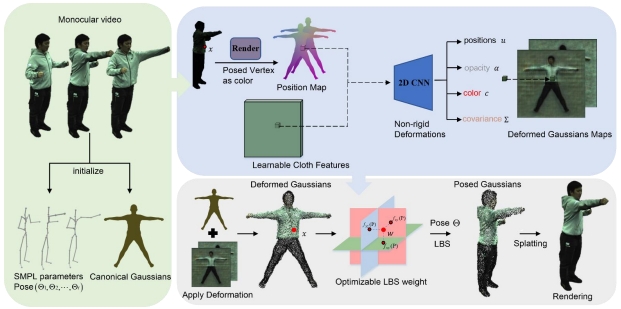by
fen Li Ren, Sabrina Mohd Rashid, Normahfuzah Ahmad
Metaverse
2025,
6(4);
Abstract
The integration of metaverse technology in tourism destination development has become an industry consensus, with numerous destinations utilizing immersive interactive experiences to inject vitality into tourism. However, existing research has insufficiently addressed how digital media technologies in the metaverse era drive tourism destination brand communication. Focusing on the Jingxing tourism destination, this study addresses its current challenges including superficial cultural experiences, unidirectional communication patterns, and fragmented technology application by proposing innovative brand communication strategies utilizing digital media technologies. Based on the Uses and Gratifications Theory and employing content analysis and in-depth interviews, the research demonstrates how the immersive and interactive characteristics of digital media technologies align with users' deep-seated cognitive, emotional, and social needs. Building on this foundation, the study constructs a four-dimensional strategic system centered on immersive narrative experiences, interactive co-creation platforms, technology ecosystem integration, and sustainable operations. Through VR/AR scene reconstruction, UGC community co-creation, digital asset distribution, and virtual-physical integration models, this system aims to transform Jingxing from a geographical destination into a cultural IP and emotional connection space, ultimately achieving a paradigm shift in brand communication from one-way dissemination to user-driven engagement and from information delivery to value co-creation, thereby providing theoretical references and practical pathways for the digital communication of similar cultural heritage tourism destinations.
show more
by
Heng Chen, Fei Huang
Metaverse
2025,
6(4);
Abstract
Since 2023, the integration of the Metaverse and Artificial Intelligence (AI) in securities markets has rapidly emerged, covering immersive trading floors, AI-driven virtual advisors, and market simulations based on multi-agent reinforcement learning. This review systematically examines the technological foundations (deep learning, reinforcement learning, multimodal learning, and metaverse platforms), key applications, representative theoretical models, practical case studies, and the challenges and future directions. Unlike earlier reviews that treated AI and the Metaverse separately, this paper highlights their symbiotic integration, with the Metaverse providing immersive data carriers and AI enabling intelligent decision-making. Evidence indicates that multimodal and multi-agent methods are becoming the core paradigm for securities analysis in the Metaverse era, while immersive interaction and intelligent agents are reshaping investment research and advisory processes. These practices bring measurable improvements in efficiency (e.g., reduced transaction latency, improved fraud detection accuracy) and inclusiveness (e.g., broader access for retail investors) to stock markets, confirming the systemic transformation of capital markets.
show more
by
David de Matías Batalla, Rubén Nicolás Sans
Metaverse
2025,
6(4);
Abstract
This study investigates the potential of the metaverse as an educational tool in higher education and its impact on students’ employability skills. With the ongoing digital transformation, the metaverse offers an immersive environment integrating virtual reality, collaboration, and experiential learning. The research aims to evaluate how participation in metaverse-based activities enhances competencies required by modern labour markets, including digital literacy, creativity, communication, and adaptability. A quantitative design was applied, involving a structured questionnaire administered to a non-probabilistic sample of 200 Spanish undergraduate and postgraduate students, aged 18 to 25, across various academic disciplines. The survey examined students’ perceptions of metaverse-enriched learning, its influence on competence acquisition, and its relevance to future professional engagement. Data analysis, which utilized Structural Equation Modelling (SEM) and independent samples t-tests, confirmed strong correlations between active involvement in immersive environments and improvements in employability profiles. The results indicate that Perceived Usefulness (PU) was the strongest predictor of Intention to Use the metaverse (β = 0.51, ρ < 0.001). Furthermore, the study found that Engineering students reported significantly higher Perceived Usefulness (M = 4.12, ρ < 0.001) than Social Sciences students, and female students showed a greater willingness to invest time in acquiring new technological skills (Perception of External Control, M = 4.15, ρ = 0.003). The findings suggest that the adoption of metaverse technologies by higher education institutions can reduce the skills gap between academic training and professional practice. Simulation-based activities and collaborative projects in virtual spaces prepare students for hybrid and digitally intensive workplaces. The study concludes that integrating the metaverse strategically into curricula supports the development of twenty-first-century skills essential for long-term employability.
show more
by
Md Golam Muttaquee Talukder, Olugbenga Akinade, Muhammad Zahid Iqbal
Metaverse
2025,
6(4);
Abstract
Virtual Reality (VR) technology develops new, engaging ways for digital marketing to reach consumers through immersive environments. The rise of meta-influencers represents a fresh approach to marketing through influencers because these virtual personas can interact with customers in virtual spaces. For the purpose of this review, we define meta-influencers as AI-powered virtual influencers, typically hyper-realistic avatars or digital humans operating within immersive VR environments to influence consumer behaviour and brand engagement. The use of meta-influencers or virtual influencers presents organisations with improved scalability and managed promotional efforts, along with two major challenges regarding authenticity and privacy risks in data collection. Positive engagement between consumers and VR environments depends on the application of social presence components alongside gamification elements and digital rewards like NFTs. This study analyses 18 peer-reviewed studies regarding meta-influencers in VR marketing by using the PICO framework (Population, Intervention, Comparison, Outcome) to examine their influence on customer engagement as well as brand loyalty and immersive brand experiences. The study shows the requirement for ethical AI approaches to develop influencers together with standardised data protocols, which resolve emerging technological and moral problems in the AI domain. This study also proposed a conceptual model based on the Stimulus-Organism-Response (S-O-R) framework to explain how meta-influencers shape consumer perceptions and behaviour in VR, helping consumers make purchasing decisions and encouraging long-term brand loyalty through immersive interactions.
show more
by
Ioanna Chatzopoulou, Paraskevi Tsoutsa, Panos Fitsilis
Metaverse
2025,
6(4);
Abstract
The integration of metaverse technologies within Smart Cities (SCs) is transforming urban governance and citizen engagement. Despite the increasing academic and industry interest, research on the practical applications of the metaverse in SCs remains fragmented. This study addresses this gap through a systematic literature review on how metaverse-driven solutions impact economic transformation, governance, mobility, sustainability, and social interactions in urban environments. Motivated by the growing demand for immersive, data-driven, and participatory SC solutions, this research applies Giffinger’s SC model to evaluate metaverse integration across key SC dimensions. The study synthesizes findings from existing applications and case studies, such as Metaverse Seoul, Dubai’s Metaverse Strategy, Virtual Helsinki, and Tampere’s CitiVerse initiative, to illustrate the diverse ways in which cities are leveraging metaverse technologies. These applications demonstrate the metaverse’s potential in digital governance, Artificial Intelligence (AI)-driven urban planning, e-participation, transportation optimization, and climate resilience strategies. This research contributes to the field by providing a comprehensive framework for understanding the benefits and challenges of metaverse-driven SC models. The findings suggest that while metaverse adoption in SCs presents significant advantages in efficiency, participation, and innovation, it also entails challenges related to technological accessibility, governance frameworks, and security measures that must be addressed for broad uptake. The study’s impact extends to policymakers, urban planners, and technology developers by offering strategic insights for responsible and inclusive metaverse adoption. Ultimately, this study provides a structured roadmap for integrating metaverse technologies into smart urban ecosystems, ensuring their long-term viability, accessibility, and effectiveness in shaping the cities of the future.
show more








 Open Access
Open Access




.jpg)
.jpg)

